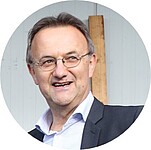CP4: Autonomous Machines and Seed and Fertilizer Applications in NOcsPS Cropping Systems
Today crop plants are not evenly distributed across a field surface. Therefore, the individual plants of a stand have a varying access to the necessary resources and hence their growth varies depending on the availability of space, nutrients etc. Evenly in space distributed plants across a surface can utilize their potential and the resources and furthermore, are much better anchored in the soil. The later effect shows advantages when mechanical treatments in weed control are applied as for example spring tine harrowing. In general, main crops as maize and grains show big potentials due to their uneven spatial distributions (Griepentrog 1995, Olsen et al. 2012).
During recent years a subsurface placement of fertilizer showed an increase in nutrient efficiency. This process incorporates granules into the soil in a particular amount, depth and distance to the crop plants (Fernandez & White, 2012). This is important today, because today drought periods are more common during the vegetation period. Fertilizers placed on the field surface show increased drawbacks, because rain is needed to make the nutrients available in the soil for the update of crop plants.
The aim of the subproject is to show that a very even spatial distribution of crop plants as well as an injection of fertilizers into the soil is possible on a highly automated level in order to increase agricultural potentials and efficiency as well as weed suppression.
The following hypotheses will be tested:
- By using the NOcsPS approach a significant higher evenness of spatial plant distributions across a field will be achieved compared with the conventional establishment.
- By using the NOcsPS approach with a spatially and precisely controlled actuator subsurface depots in the soil will be generated for individual crop plants (for maize and soy beans).
- The optimized seeding and fertilizer applicators will be conducted autonomously with a combination of application maps and real-time sensing.
Particular elements of precision seeders will be modified to optimize the horizontal and vertical placements of seeds in the soil. Different autonomous seeders for maize, soy beans and cereals will be used. The positioning of individual seeds will be synchronized and geo-referenced in order to create consistent plant patterns on the soil.
The fertilizer application requires the development of new sensors and actuators which will selectively plant individual seeds (maize and possibly soy beans).
For all developments the available electrical and autonomous machines of the institute’ section will be used. At the end of the subproject duration of 3 years an autonomous seeding and fertilizer soil injection system will be available as a tested prototype.
Overall the following plant-cultivation effects are expected: increased nutrient absorption, microclimatic improvements by wider row spacing and a reduction of seed rates.



